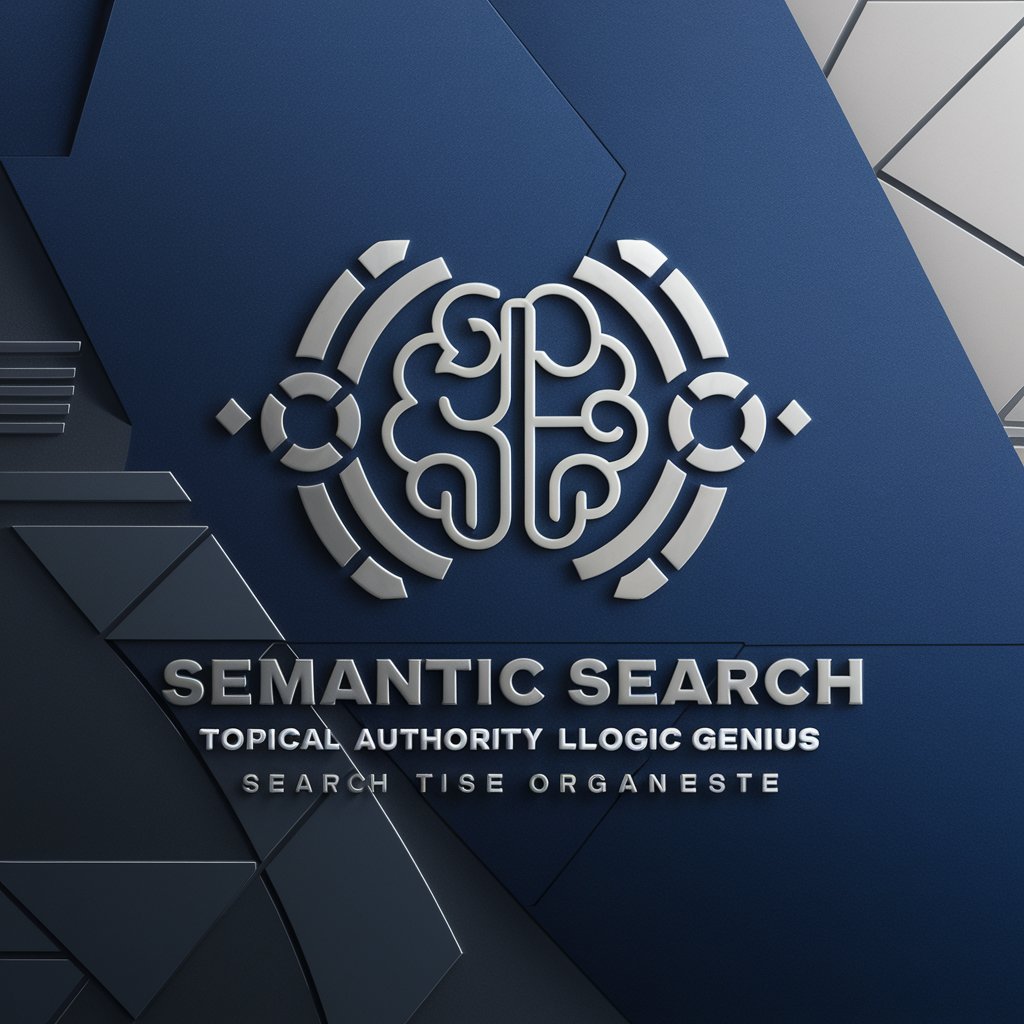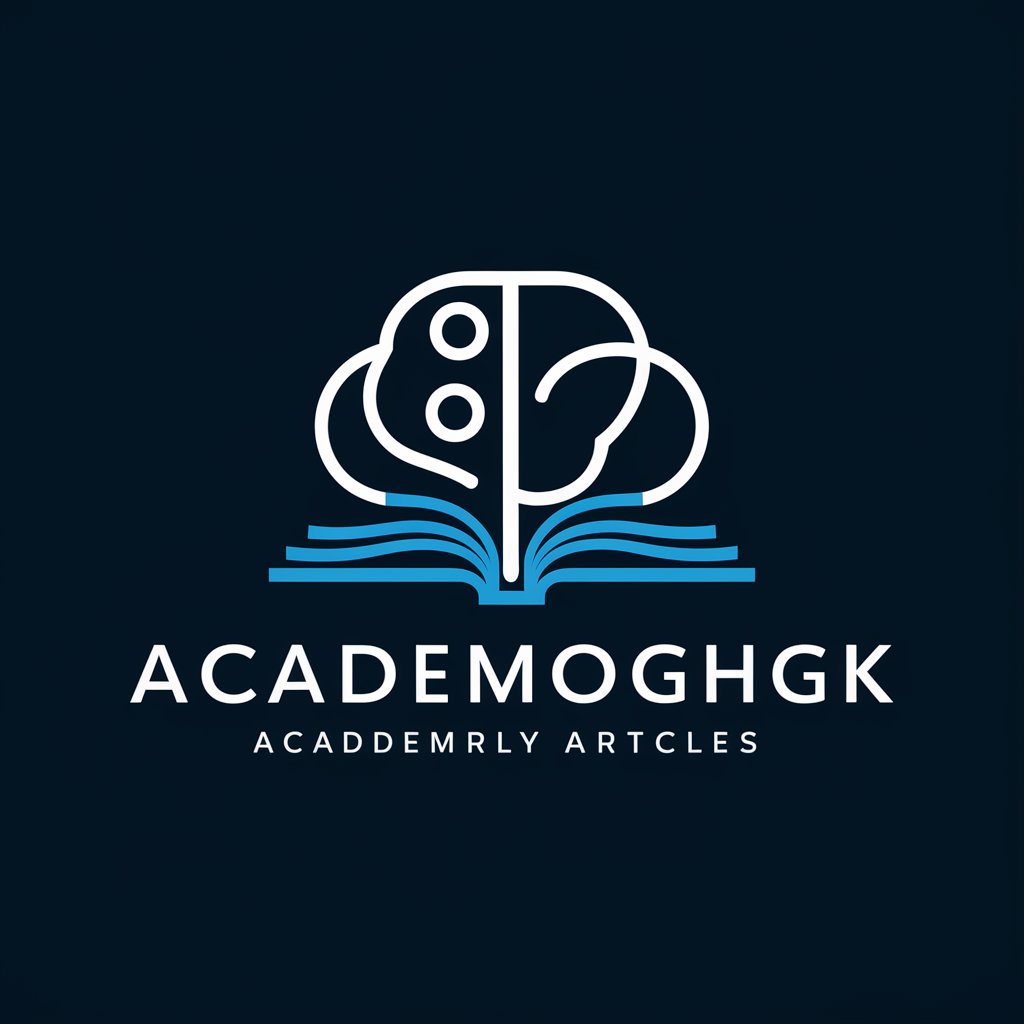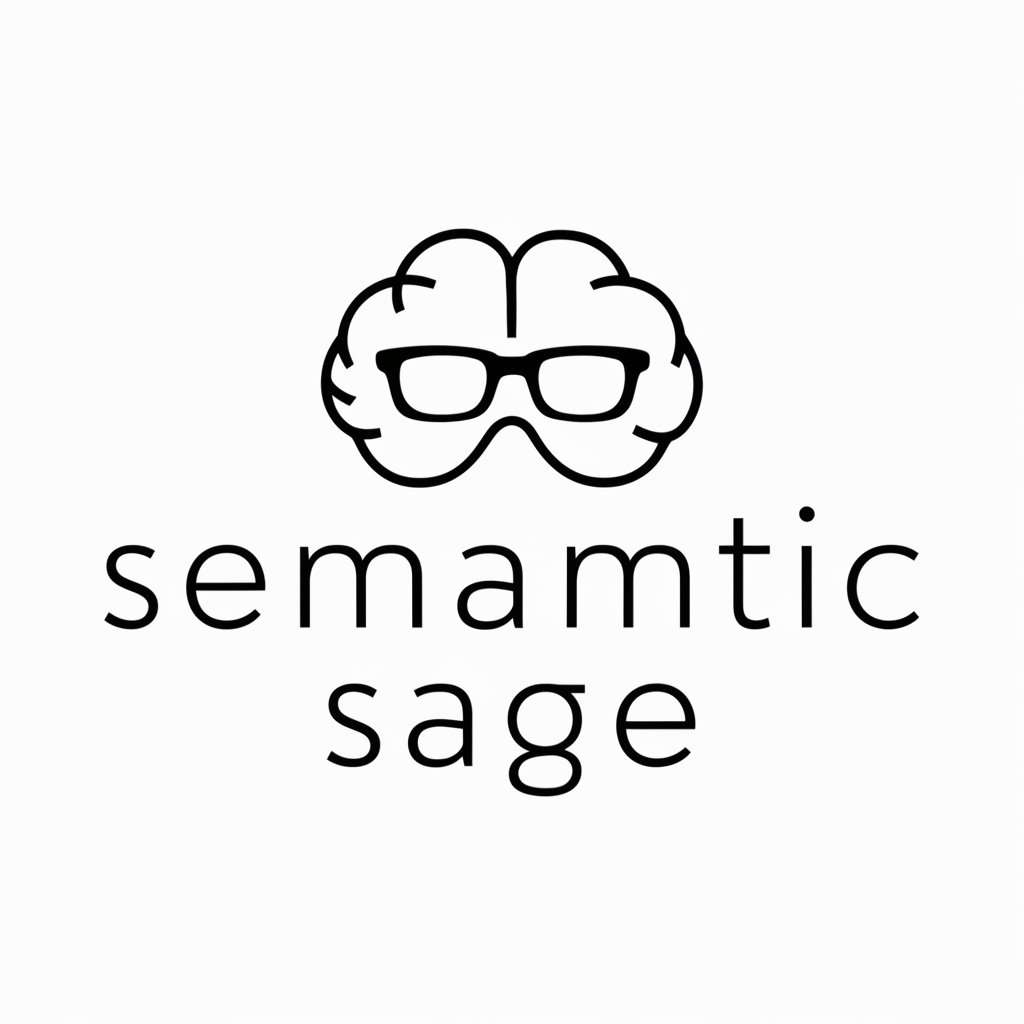Content Writer for Semantic Optimization - Semantic Content Enhancement

Hello! I'm here to enhance your content for better search engine performance.
Empower your words with AI-driven optimization.
Write an engaging introduction about the benefits of semantic optimization in content writing.
Describe the role of a content writer specializing in enhancing text for Google algorithms.
Explain how sequence modeling and entity salience improve the relevance of web content.
Discuss the importance of readability in content optimized for search engines.
Get Embed Code
Overview of Content Writer for Semantic Optimization
Content Writer for Semantic Optimization is designed to enhance textual content for better alignment with Google's search algorithms, specifically BERT and MUM. It focuses on improving semantic richness and linguistic clarity, aiming to optimize content for better search engine visibility and user engagement. By integrating advanced techniques like sequence modelling and lexical relationship structures, it ensures content is not only relevant but also easy to understand. An example scenario is optimizing a blog post to ensure it covers related topics, uses varied vocabulary, and maintains a clear structure, thereby improving its search engine ranking and reader engagement. Powered by ChatGPT-4o。

Key Functions and Applications
Semantic Enrichment
Example
Expanding a text on digital marketing to include related concepts like SEO, content marketing, and social media strategies.
Scenario
A digital marketing agency wants to improve their blog's visibility. The Content Writer for Semantic Optimization would analyze the blog, identify key topics and related concepts, and suggest content enhancements to cover these areas comprehensively.
Readability Improvement
Example
Simplifying complex technical jargon into plain English in a software manual.
Scenario
A tech company wants to make their software manuals more user-friendly. The tool would rephrase complex terminologies and instructions into simpler language, making the content more accessible to non-technical users.
Structural Optimization
Example
Reorganizing an article to ensure a logical flow from introduction to conclusion, including the use of headings and subheadings.
Scenario
An online publisher wants to enhance the structure of their articles for better user engagement and SEO. The tool would analyze the article's structure and suggest improvements for better readability and SEO performance.
Target User Groups
Digital Marketers
Digital marketers can use the tool to optimize their content for search engines, ensuring their articles, blogs, and webpages rank higher and reach a broader audience.
Content Creators
Bloggers, writers, and content creators can leverage the tool to enhance the readability and engagement of their texts, making their content more appealing to readers and more likely to be shared and referenced.
SEO Specialists
SEO specialists can utilize the tool to refine their content strategies, ensuring their webpages are optimized for semantic search and align with the latest search engine algorithms, thus improving their overall SEO performance.

How to Utilize Content Writer for Semantic Optimization
Begin your journey
Start by accessing yeschat.ai to enjoy a complimentary trial, no account creation or ChatGPT Plus subscription necessary.
Identify your needs
Determine the type of content you need optimized, such as blog posts, web content, or academic writing, to tailor the tool's capabilities to your specific requirements.
Customize your request
Provide detailed input about your content, including the target audience, desired tone, and key points to cover, enabling the tool to generate the most relevant and engaging content.
Leverage semantic optimization
Use the tool's suggestions to enrich your content with semantic richness and linguistic clarity, ensuring it aligns with Google's algorithms for optimal online visibility.
Review and iterate
Examine the optimized content, applying any necessary refinements. Utilize feedback and iterative improvements to further enhance content quality and SEO performance.
Try other advanced and practical GPTs
OSAMA SEMANTIC
Elevate your content with AI-powered semantic structuring.

SemantIQ - Semantic SEO
Elevate SEO with AI-powered Semantics

Semantic SEO Strategy
Elevating Content with AI-Driven SEO Insights

Talk to Semantic Scholar
Unleash research potential with AI-driven insights

Semantic Sage
Clarify Text with AI

PDF Data Extraction to Excel
AI-powered PDF to Excel conversion tool

RPG Armory Architect
Forge Your Adventure with AI

Warcraft Guide
AI-powered WoW Class and Strategy Guide

Shutter Guide Personalized
Tailoring Your Shots with AI

Astrology and Horoscopes
Unlock your cosmic potential with AI-powered astrology

Celestial Guide: Horoscopes and Astrocartography
Navigate life with AI-powered astrology

Text Reply Assistant
Revolutionize texting with AI-powered responses

Frequently Asked Questions about Content Writer for Semantic Optimization
What is semantic optimization in content writing?
Semantic optimization involves enhancing content by focusing on meaning and context, rather than merely incorporating keywords. It includes using related terms, synonyms, and thematic phrases to improve content relevance and readability for both users and search engines.
How does this tool improve SEO?
This tool improves SEO by ensuring content is semantically rich, contextually relevant, and linguistically clear. It aligns with Google's BERT and MUM algorithms, enhancing content's discoverability and ranking on search engine results pages.
Can Content Writer for Semantic Optimization help with non-English content?
While primarily designed for English content optimization, the tool's underlying principles can be applied to content in other languages, with a focus on semantic richness and contextual relevance, aiding in global SEO strategies.
Is this tool suitable for academic writing?
Absolutely. The tool can enhance academic writing by improving the structure, clarity, and relevance of the content, making complex topics accessible and engaging for a broader audience while maintaining academic integrity.
How can I measure the impact of using this tool on my content?
Measure the impact by tracking changes in your content's search engine rankings, website traffic, engagement metrics, and conversion rates before and after optimization. These metrics can provide insights into the tool's effectiveness in enhancing your online visibility.
